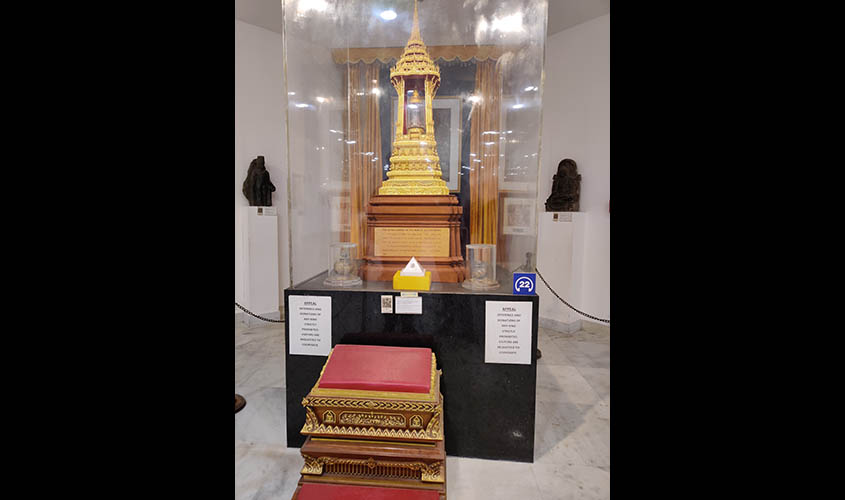Hyderabad: Every year, Buddhist pilgrims from across the world may be visiting the National Museum in New Delhi to pay obeisance to the 20 bone fragments of Lord Buddha that are on display here, but not much has been done to spread the message that India houses this treasure. As a result of this, the footfall of devotees is not as many as it would have been if these relics had been given a pride of place as they deserve, as in Sri Lanka, for instance, where thousands of devotees and tourists visit the Temple of the Tooth every day in the city of Kandy, where Lord Buddha’s tooth is preserved.
The 20 bone fragments that are on display at the National Museum are part of the 22 bone fragments that were discovered by the Archaeological Survey of India (ASI) in the 1970s in two separate caskets made of soapstone. The other two pieces of these bone fragments are on display at the National Museum in Kolkata.
These bone fragments which are considered as one of the most sacred relics of Buddhism are currently placed in a pavilion built in gold at the National Museum. The golden pavilion was presented as a gift to the museum by the royal Thai government in 1997.
Since the discovery of these sacred relics, several Buddhist monks and heads of states that follow Buddhism as a religion have been visiting the museum in Delhi.
According to museum officials, the royal family of Thailand and Bhutan are regular visitors to pay their respect to the sacred relics. The President and Prime Minister of Sri Lanka have also been regular visitors to the museum to pay their respect.
“The royal family of Thailand is a regular visitor apart from the royal family of Bhutan. The royal family has gifted us this pavilion to house the sacred relics of Buddha. Earlier, they were kept in a glass casket for public viewing and now that we have the pavilion, we have kept the relics in it. The royal family comes here and offers prayers. The stairs leading up to the pavilion is also gifted by the royal family as the Queen was having a problem praying here,” a senior official from the museum told The Sunday Guardian.
Buddhist monks too visit the museum to get a glimpse of the sacred relics.
The senior museum official The Sunday Guardian spoke to also said that during Buddha Purnima festival, several monks from across the world come here to pray.
“As the relics are kept in a separate section made especially for Buddhist sculptures, we have given a space where monks come on the day of Buddha Purnima and pray. They sit silently and meditate,” the official said.
However, the museum restricts any offerings or donations to be made at the site and has pasted similar instructions at the pavilion for all its visitors.
The Sunday Guardian also spoke to a Buddhist monk from Ladakh who was visiting the museum to pay his obeisance to the sacred relic. The monk said, “This is one of the holiest sites for Buddhists. These are bone structures of Lord Buddha and one of the rarest that can be found in the world.”
The monk was also of the opinion that some of the relics should be shifted out by the museum authorities to a Buddhist holy site where the devout can offer prayers in an unrestricted manner.
Kiren Rijiju, former Minister of State for Home Affairs, had made a request with the museum director in 2015 to shift the relics out of the museum to a sacred place so that people could offer their prayers as it was becoming difficult for devotees to offer their prayer inside a museum. The museum had, however, declined the request from
MHA officials say that the bones are very old and need to be taken care of, which is why it is difficult to shift the relics out of the museum.
“The bones are thousands of years old. They are kept under preservation with the museum. The bones are checked every six months by the laboratory and all preservation efforts are taken to ensure that nothing happens to them. They have to be kept under observation,” a museum official said.
The sacred relics have been sent to several countries that follow Buddhism for public viewing. The relics were taken to Sri Lanka (1976), Mongolia (1993), Singapore (1994), South Korea (1995) and Thailand.

